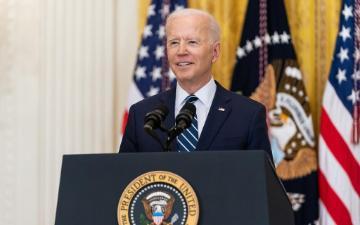Each day seems to bring another tragic story of child or sexual abuse by a Catholic priest. Unfortunately, it is not just bishops and religious leaders in the Catholic Church who must cope with episodes of abuse. Similar incidents occur in other religious denominations - and, indeed, in secular institutions like schools, colleges, sports teams and social service agencies.
Better screening of new employees and better psychological tests for future clergy can reduce the frequency of these tragedies. So too can frequent encouragement to employees and others to be watchful to signs of abuse and to report suspicions immediately. But none of these steps will eliminate the problem of child and sexual abuse entirely. Psychologists tell us that a small but apparently irreducible percentage of the population is prone to this destructive behavior.
Responding to incidents of abuse, and to milder but still serious acts of harassment and intimidation, will always be part of the job of the top executive of any religious organization, and of any sizable school, social service agency, or corporation. Responding to such incidents is one of a series unavoidable ethical challenges in the life of any leader in a large organization. In short, it goes with the territory.
Bishops, university presidents, and CEO's all need to understand these incidents are predictable. And they need a step-by-step guide to the ethical handling of such incidents when they arise. In reading the morning headlines, we should judge those leaders and their institutions - not by the fact that an incident has occurred - but by how the leader and institution have responded when they inevitably occur. Abuse and harassment tragically will occur in every large organization.
I believe every leader's "ethical toolkit" must include the following four clear principles for handling incidents of abuse and harassment:
Protect the Victim and Potential Victims. First, the leader must immediately protect the victim from more abuse and intimidation. The accused must be removed from the immediate vicinity - and kept away. This means getting the priest out of the parish, the professor off the campus, the coach away from his or her team. This requires the leader to make a quick judgement whether the charge has any likelihood of being true. Unless the accuser is a habitual liar, has obvious ulterior motives, or otherwise gives immediate reason to disbelieve, the leader must remove the accused - even if the behavior seems unlikely. And the accused must be placed where there is no danger to any other potential victims. The protection of "future victims" is at least as important as the protection of the existing victim. This is why moving accused priests from parish to parish seems so irresponsible to us.
Do Justice for the Victim. The second ethical principle is that the victim must receive the help—and justice—he or she deserves. This may involve counseling and rehabilitative services—provided by the institution. It may involve a financial settlement. There will always be some contention in settling abuse lawsuits, but the victim must not be threatened or intimidated in the process of settlement. Leaders must bend over backwards to seek early resolution. Some observers believe this principle has been repeatedly violated by church officials who sought to discredit or intimidate victims.
Bring the Accused to Justice. Thirdly, the accused must be brought to justice. For the leader today, this will usually consist of alerting the police or legal authorities quickly and cooperating with them fully. It is important to note here that we understand child and sexual abuse very differently today than we did a few years ago. Previously, we were more likely to consider abuse as a curable mental illness. Today we view it as criminal behavior and an incurable tendency. We also have a much clearer understanding of the damage done to the victims. Every leader will be tempted to "excuse" the behavior of long time employees or otherwise exemplary individuals. It takes courage to act decisively under these conditions.
Protect the Organization. Fourth, the leader has a legitimate ethical obligation to protect his or her own institution - but only after attending to the first three ethical obligations. Until recently many bishops—and many corporate and university leaders—believed they had a responsibility to their own organization to try to keep such incidents quiet. This led to the official efforts to discredit the victims and to demand settlements that required confidentiality. Today, the institution's interest is clearly served by prompt and open ethical management of the issue—and by strict adherence to the ethical principles outlined here.
When future incidents of child and sexual abuse arise—and they will—we should ask two questions: has the leader has taken preventive steps to screen and monitor employees and to reduce the likelihood of incidents; and has the leader paid attention to the four ethical obligations outlined here.
Kirk O. Hanson is the Executive Director of the Markkula Center for Applied Ethics at Santa Clara University, and University Professor of Organizations & Society.
October 2002



